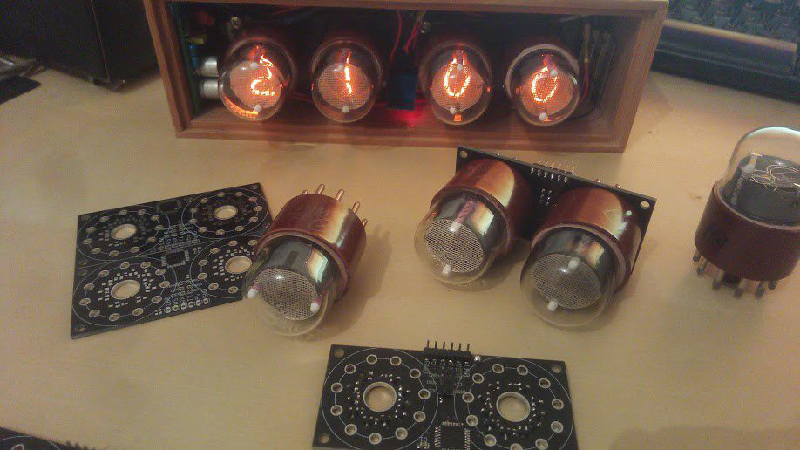Ah, Nixie tubes. You’re not cool unless you have a few Nixie tubes sitting around, and you’re not awesome unless you’ve built your own Nixie tube clock. That’s what [Thomas] is doing for his entry into the Hackaday Prize, and he’s come up with a very low-cost way of doing it.
For the high voltage supply of this build, [Thomas] is turning to one of the standard circuits based on the MC34063 that’s simple enough and good enough to make everything work. There are really no surprises with the power supply here. This is all a project about turning on different digits inside the Nixie, though, and for that [Thomas] spun his own board capable of driving a pair of IN-1 Nixies with a single ATMega8.
These two-Nixie boards are daisy chained together through a UART connection, where each board passes digits down the line. For example, the first board receives, 12, 30, and 59, displays 59, and passes 12 and 30 down to the next boards. The second board then displays 30 and passes 12 to the last board.
Of course, if you’ve designed a Nixie driver, the next thing to do is to build a clock. [Thomas] had the rather clever idea of making an enclosure for this clock out of concrete, using a 3D printed interior mold. Everything seemed to be going well until it was time to pull the interior mold out, and a few light taps resulted in some fairly large cracks. That’s disappointing, but with a slight redesign and some more fibers in the concrete mix, this is going to turn out to be a weighty win.



















The cylindrical eye holes need a taper so you can get the form out, and all the edges need to be rounded; on a small project like this it doesn’t matter how much fiber you put in, those sharp edges will chip. You also need to pour the concrete all at once or you will get a poor cold bond between the first pour and the second. The secret to success for something like this is a plasticizer to make the concrete flow more smoothly. An admixture like KelCrete (which is sold for people shotcreting boats and domes) works magic, but unfortunately you can’t buy less than a gallon and you only need a few grams for a project like this.
I kind of love the concrete cracks. It’s not anything structural, so it’s not something to worry about too much. It’s wabi-sabi. I’d fill the large cracks with some kind of clear sealant, paint a thin layer on the rest, and cherish the uniqueness.
I accidentally hit the report button! My apologies!
I wasn’t clear about the material (looked like wood?) but maybe switching to metal or PVC for the holes. wood will swell when wet and can take a long time to return similar size. Conversely, I cannot see why you couldn’t fully saturate the wood before you begin pouring, then when things dry, the wood should be smaller than the holes left behind…Thoughts?